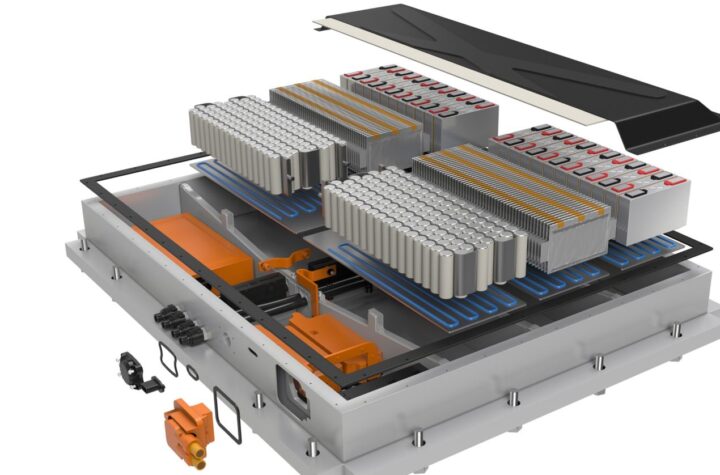
Carl Zeiss is a highly-respected brand name and is recognized throughout the world for its history of producing leading-edge technologies and products. The company became known above all for its top-quality microscopes and lens systems. Right from the very start, these high-quality products were manufactured with measuring and inspection tools that were produced in-house. These modest beginnings have evolved since 1919 to produce a business unit that today ranks as one of the world’s leading manufacturers of coordinate measuring machines.
Founded in 1846, it took just 50 years for the enterprise to transform itself from a one-man operation into a global company. Carl Zeiss began manufacturing simple microscopes with magnifying lenses in 1847. The subsequent increase in the demand for microscopes was so rapid that it became necessary to introduce a more efficient form of industrial manufacturing in the early 1880s.
Measuring instruments from Jena
The high-precision procedures used in microscope production also included precise measurements and checks of the parts and tools employed during the production process. Right from the experimental stages of his work, Carl Zeiss employee Ernst Abbe made use of measuring and inspection instruments produced to his own specifications. For the first time, this included the use of optical measuring devices to check lens systems. Seeking new ways to check geometric shapes, he developed dimensional measuring instruments, spherometers and thickness gages.
Up until the outbreak of the First World War, most of the company’s customers were from the scientific community. After the war, the company looked for ways to supplement its product portfolio. Carl Zeiss had always been taking careful note of the trend towards improved efficiency in the economy. Many companies were looking to obtain a competitive advantage and cost benefits by introducing standardized, high precision manufacturing processes, for which they required top-quality measuring instruments that were not easily available during the early years. Carl Zeiss spotted this gap in the market. The company had been producing measuring instruments for in-house use ever since Abbe’s time, but an internal order for 10,000 screw gages was essentially the starting signal for the manufacture of precision measuring instruments.
Once initial steps had been taken to make the leap from producing instruments for in-house use to producing them for new customers and markets, Carl Zeiss soon realized that they were operating in foreign territory. After all, precision measuring instruments were products for customers in the industrial area, with whom they previously had minimal contact. 1919 was the year that marked the real beginnings of the industrial metrology division at Carl Zeiss. A major decision was made, namely that Schuchardt & Schütte would take over general distribution of the new precision measuring instruments produced by Carl Zeiss. Schuchardt & Schütte boosted awareness of the precision measuring instruments in industry circles, while Carl Zeiss focused its attention on development and production. This collaboration between the two partners lasted until 1930. Carl Zeiss then took responsibility for sales.
At a crossroads
The occupation of Jena at the end of World War II by American troops on April 13, 1945, heralded a new era. With the emergence of two separate German states at the end of this process, there were suddenly also two companies with the name Carl Zeiss. The splitting of Carl Zeiss into two parts also marked a significant turning point for the precision measuring business, with one precision measuring department now in East Germany, and one in West Germany. However, major elements of the division’s foundations had simply collapsed. The division’s leading lights, above all its former Head, Dr. Kurt Räntsch, were among the Carl Zeiss employees brought to Heidenheim by the Americans. During the 1950s and 1960s, both precision measuring departments developed high-quality measuring instruments independent of each other.
In 1974, a team headed by the former lab manager Klaus Herzog began to focus on innovative instruments providing electronic output of measurements and numerical control. As early as1972, the Precision Measuring Department was already working on a 3D coordinate measuring machine, and in 1973 the UMM 500 Universal Measuring Machine was introduced at the “Microtecnic” trade fair in Zurich, Switzerland. The impact of the UMM 500 forged a strong link between the development of modern industrial metrology and the name Carl Zeiss. Based on the changing conditions in the field of metrology and the department’s new profile, the Precision Measuring Department was renamed to Industrial Metrology (IMT) in 1977.
The foundation is laid
By the end of the 1970s, IMT was able to look back on impressive results. The development of the “ZEISS 3D Measuring Concept” represented an innovative example of design engineering that had provided a major boost to the field of coordinate metrology. It was successfully put to use in the UMM 500, UMM 800, and WMM coordinate measuring machines, as well as in additional devices. The machines offered comprehensive probing options, a common control system, powerful computers, data printers, regularly updated software and computer controlled CNC capabilities.
Trends
The 1980s marked the final breakthrough of the computer and information age. There were two prevailing trends in the field of metrology. On the one hand, there was an expansion of the available ways and means of measuring dimensions, shapes and positions on prismatic components, parts with plane curves and three dimensionally curved surfaces, and gears. The other trend revolved around the key concept of “industrial metrology,” a term that was used to characterize the slow but steady shifting of coordinate metrology from the metrology room to the shop floor.
A new strategy
In the early 1990s, IMT developed a multi –pronged strategy for a sustained successful future. This included expanding the company’s product range while maintaining its target group orientation, a step that resulted in the fusion with the Esslingenbased Stiefelmayer GmbH in 1994. This enabled IMT to position itself as a supplier of horizontal-arm CMMs for car body metrology.
Innovations
Carl Zeiss continued developing new and innovative products and technologies, consistently setting trends in the coordinate metrology field and tailoring its services ever more closely to customer requirements.
While users had spent years enjoying the ability to measure extra-large parts using Carl Zeiss gantry and bridge-type coordinate measuring machines, the year 2004 saw Carl Zeiss IMT venture into the field of measurements on a much smaller scale. For the very first time, the F25 measuring system enabled measurements in the nanometer region, making it possible to measure any kind of micro-components Carl Zeiss presented the METROTOM® 1500 computer tomograph to experts in 2006. It was a measuring machine that permitted a look at the insides of a workpiece.
Looking to the Future
The history of metrology at Carl Zeiss has been a unique success story. Within a span of 90 years, IMT developed into an integral part of the Carl Zeiss family. Key scientific findings and a steady stream of machine and component innovations from “ZEISS Precision Measuring” or Carl Zeiss IMT has made a substantial contribution to the successful development of metrology and coordinate metrology.
Around 1,800 employees now work for Carl Zeiss IMT at three locations in Germany, China and the USA. In addition, there are approximately 100 sales and service centers around the world. IMT is the market and technology leader that offers a unique range of measuring machines and software based on decades of experience. With a will to innovate and push boundaries and a broad range of products and services, IMT continues on the path of success










More Stories
Sonatus – The industry is shifting gears to software
Cybord warns of dangers of the stability illusion
HERE building trust in ADAS systems